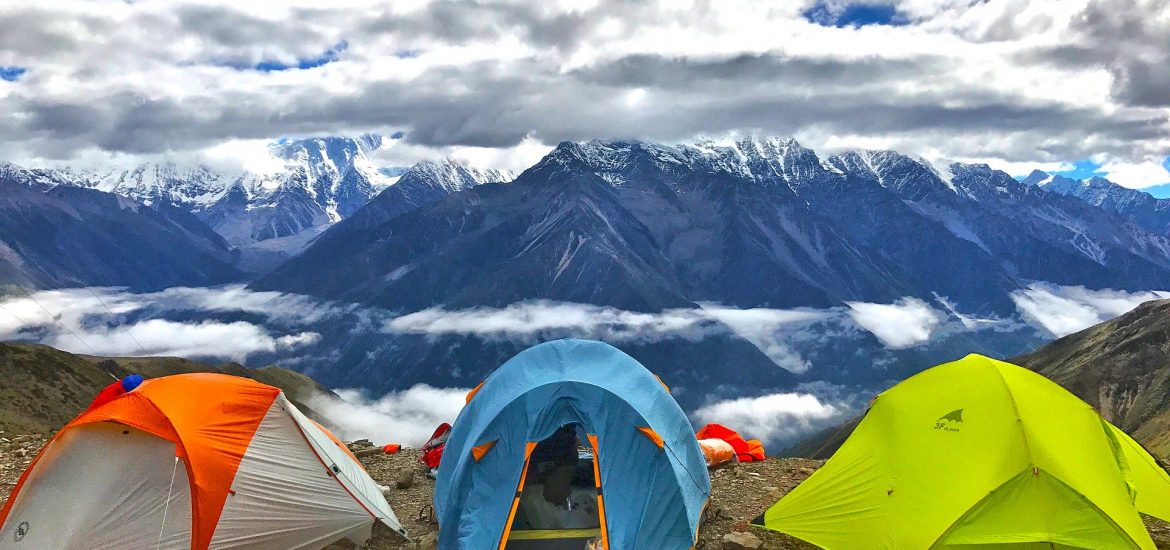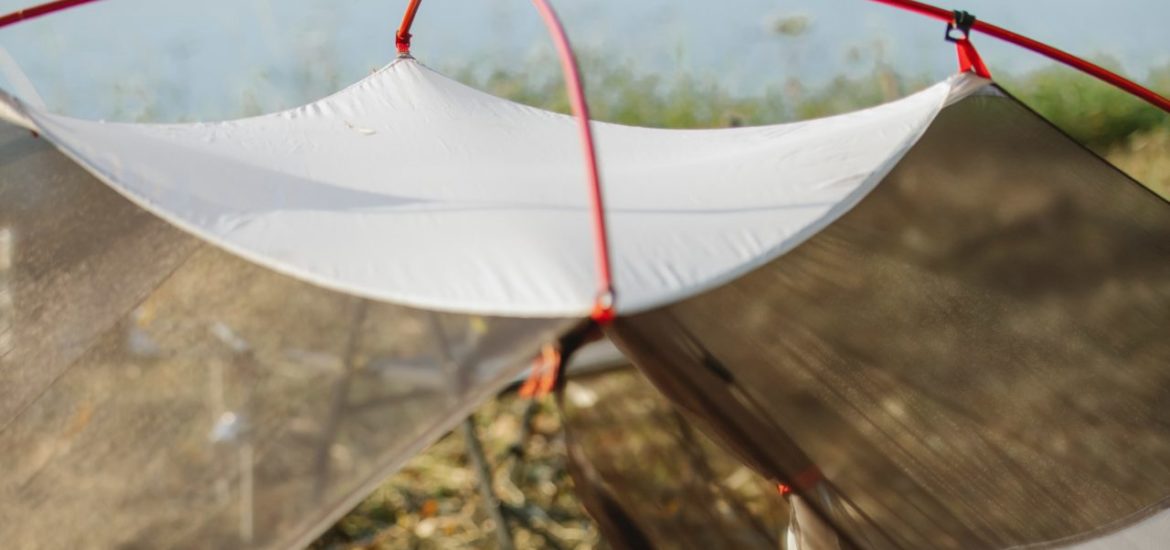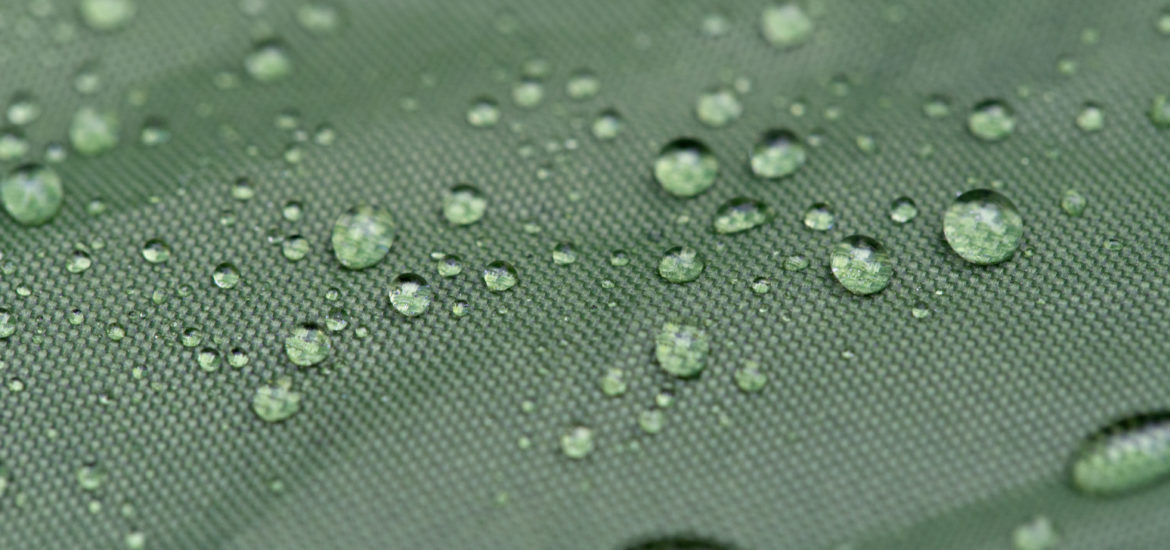Even on a dry night out, it’s possible to wake up covered in water. It seems like a mystery at times, but eventually the realization of condensation inside the tent is obvious. The next step is figuring out what to do about it.
On a beautiful summer day, you can easily lay out your gear and let it dry while you throw back breakfast. Life gets a bit different in the cooler months and condensation can become more dangerous than it is just uncomfortable.
How to stop condensation in tent living is a necessary skill for those looking to experience the outdoors at any time.
Article Contents:
Why Does Condensation Form Inside of a Camping Tent?
Inside your tent is you, snuggled up in a sleeping bag getting nice and warm on a cool night. The warmth from your body slowly radiates out and fills up the tent, making a miniature, lukewarm sauna.
When the warm air inside the tent meets with the cold tent’s rain fly, moisture starts to build up and form into beads of water on the interior of the tent.
Any moisture that is inside the tent will end up on the rain flay and eventually drip down onto you. That means the moisture from the air you are exhaling, any bit of sweaty clothing, or even steam from a pair of boots at the end of the day.
This can be compared to the ways in which condensation forms on a glass of cold water, but backwards. All of the water that forms and runs down the side, creating the watermark that your mom yells at you for, will be running down onto you in the tent.
It’s a shocking amount of water that seems to appear from nowhere, but we can’t fight science, just learn how to go along with it.

Weather Conditions
There are certain weather conditions that can make condensation a bigger issue than others.
For example:
- Clear, still, and cold nights will increase the difference in temperature between the tent and the outdoors, resulting in more condensation.
- Nights that are warm and rainy will also build a high level of condensation due to the rain cooling down the tent and the moisture in the air.
- A still night after a big afternoon storm (frequently occurring in the mountains during summer) will increase moisture in the air, and thus inside your tent.
Nights that are still are the most prone to getting a high level of condensation build up. Wind helps to wick away the moisture. So, while windy nights mean potentially restless sleep, they can also mean a dry tent to wake up to.
This shouldn’t be the deciding factor when you’re making up your mind and planning a camping trip, but you should recognize the moments when condensation is a higher risk than others.
It helps to plan and take the proper precautions in order to avoid the potential issues that come along with moisture.

Why is Condensation a Problem Inside a Camping Tent?
Condensation is really a problem when getting wet can lead to issues and differs between summer and winter camping.
Condensation in the Summer
Wetness in the summer can result in mold growing quickly once everything is packed up.
This requires you to spend time at camp in the morning getting everything dried out well before starting your hike.
And, when there are loads of miles to be put under your boots, time is money.
Condensation in the Winter
In the winter, moisture becomes more dangerous than just an inconvenience.
Waking up wet because your tent collected a large amount of moisture can increase your risk of hypothermia and other cold injuries.
Packing up a wet tent (because there’s no real way of drying it before packing) leads to wet hands, which can quickly become frostbitten icicles requiring a quick exit.
If you’re looking for a solid 3-season tent recommendation, check out my article [Top 3] Camping Tents Perfectly Engineered for Heavy Rain and High Winds.
How to Prevent Condensation Formation Inside a Camping Tent?
Condensation isn’t a guarantee. It’s possible to manage it and control the level of moisture that you create inside the tent and set yourself up for success. Waking up dry is one of the bountiful joys of knowing what you’re doing out there.
Camping in the winter requires going out prepared with the right knowledge of how to do so. First, learn the proper ways to go out winter camping and keep yourself as dry and comfortable as possible.
- Manage the amount of moisture that you create, and that will naturally reduce what forms on the interior of the tent.
The biggest preventative measure is ensuring a good flow of air and ventilation through your tent.
- This provides a space for the condensation and moisture in the tent to escape, rather than become trapped and form on the inside of the tent.
Ventilation can be achieved through multiple different ways of setting up your tent, and utilizing certain tent features in the right way such as mesh vents.

What Camping Tent Features Prevents Condensation Formation?
Tent Vents
Tent vents are designed specifically for this reason.
- Typically, these are small triangle sections on the roof of the tent that is held up with a velcro bar.
Propping these open may let some of the warmth out, but the shift in moisture retention is well worth it.
Double-Wall Design
The other big and important feature of creating ventilation is only achievable with a double-wall tent design.
The mesh inner tent allows for moisture to form on the rainfly and then drain away from the main body of the tent.
Air Flow
You can also stake out the rainfly in a particular direction that can catch wind and increase airflow through the tent as you sleep.
This is almost as important as choosing your campsite wisely. It may seem obvious, but we can often forget that a damp campsite will lead to a damp tent in the morning.
This article contains affiliate links, which help support this blog at no cost to you!
